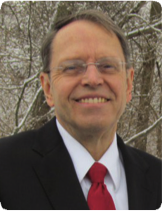Article by ASCE Awards Committee and ASCE Blog Editor
 Thomas Leech, P.E., S.E. is the 2015 ASCE Distinguished Engineer. “This is a humbling experience,” says Tom. “The award could not be possible without the assistance of many dedicated mentors and colleagues, clients who challenge, and the benefit of a superior university education.”
Thomas Leech, P.E., S.E. is the 2015 ASCE Distinguished Engineer. “This is a humbling experience,” says Tom. “The award could not be possible without the assistance of many dedicated mentors and colleagues, clients who challenge, and the benefit of a superior university education.”
Tom is the (retired) Chief Bridge Engineer of Gannett Fleming, Inc., Adjunct Professor of Civil Engineering of Carnegie Mellon University, and a part of the continuing education faculty of the Pennsylvania State University. During his 48 years at Gannett Fleming, he designed major bridges, tunnels, and highways and conducted forensic studies prior to his retirement. “[I enjoy] the satisfaction of seeing what is visualized and expressed only in pen and paper realized in the form of physical construction, which many can view, but few can appreciate,” Tom says.
“I was fortunate enough to work closely with Tom over the past 5 years,” says colleague, Linda Kaplan. “He is an excellent teacher and mentor, continually breaking complex problems down into simple concepts and basic principles so that they could be easily understood.”
“Tom was not just an engineer,” adds Gannett Fleming Vice President and National Highway Practice Manager, Eric Veydt. “He is creative, always trying something new, always looking for a better way to convey a thought or idea. Simply put, Tom always challenged us and made us better.”
Tom has led various infrastructure design projects throughout Western Pennsylvania, including the Bloomfield Bridge, the Joe Montana Bridges, the Hulton Bridge, the Toll 43 Monongahela River Crossing, the North Shore LRT Viaduct at Allegheny Station, the Fort Pitt and Squirrel Hill Tunnel Rehabilitations, and the forensic evaluation of the collapse of the Kinzua Viaduct. He has published over 50 articles in national and international journals, conference proceedings and magazines, and has delivered numerous presentations at national and international conferences. Tom was also the lead technical author of the Bridges of Pittsburgh Art Mural that is presently displayed at the Greater Pittsburgh International Airport. He recently was the editor of the book Reflections...of the Greatest Engineers and Architects of the 20th and 21st Centuries as well as a contributing author to the Geology of Pittsburgh.
“Tom has instilled in every engineer a wonderment for the science of bridge engineering, an eye for the beauty of bridge aesthetics, and a passion and determination for the problem solving,” says Senior Structural Engineer for Gannett Fleming, Jonathan McHugh.
For the past ten years, Tom has been a magazine editor for ESWP’s Summer Magazine, with each edition focusing on separate and unique topics related to the bridge industry. “Engineers have a story to tell,” he explains. “Writing to peers, the language of precision is necessary, and the nuance of detail is important. Writing to the lay reader interested in science and technology, visualization of concept, human interaction, and conciseness true to the endeavor become the overarching challenges.”
Tom has actively served the American Society of Civil Engineers and the Engineers Society of Western Pennsylvania. “Tom’s leadership through the ESWP – IBC enabled that organization to develop into an internationally recognized association,” says Mr. Veydt. Tom has also been active in the International Bridge Conference Committee, the Association for Bridge Construction and Design, and the Association of Highway Engineers.
“Tom’s influence on the Engineering Profession in the Pittsburgh Area will live on through future generations and his contribution through projects will provide lasting improvements to the region.” Mr. Veydt asserts. “I count it a great privilege to have work under Tom at the start of my career and alongside Tom throughout my career.”
